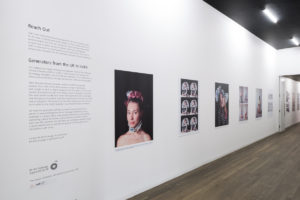SRISHTI SCHOOL: EDUCATION AND PROCESS
At Srishti, we follow a student centric and multidisciplinary pedagogical model, emphasising practice-based learning. Education can’t be summed up as a group of ‘skills’ alone, and so we embed the learning experience by inculcating self-initiated models and independent thinking.
Photography discipline falls under School of Media, Arts and Sciences. Students from the other schools can also take up photography courses. While our core courses are studio-based, we put great emphasis on humanities and project-based learning. The school also hosts a range of artists from across the globe, especially during the interim semester where they collaborate with the in-house faculty to offer project-based courses.
Photography, as a discipline here is set in the contemporary art moment. Given photography as a medium has no fixed identity, the boundary between still and moving is also very porous which takes the essentialist understanding of photography away from the form, giving us new opportunities to interpret and create. This can be mobilised not only to aesthetic ends, but for developing a new, generative rhetoric over time. The binaries between documentary and fiction, new and old media, fantasy and realism have collapsed. The photographer in the contemporary moment is working in this radically transformed landscape of fusions; a new visual culture that calls for the multiplicity of photographic forms. By engaging with existing modes of photography and actively exploring what the future of the medium can be, we create a space for making art in dialogue with society, politics and culture. A pedagogical structure like ours that is inclined on the future of medium, is also realised through curation —interweaving subject matter, technology and its dissemination..
One of the leading questions now is whether we are creating images for non-human eyes and whether images are in fact even created by humans? Professor of New Media and Communications at Goldsmiths, Joanna Zylinska in her book, Nonhuman Photography’ says, `photography is increasingly decoupled from human agency and human vision.’ Quest for that ‘decisive moment’ through the agency light has morphed into algorithms and our capacity to make a million images a second. On top of this, mediums everywhere are losing their singularities to ‘textuality’ and going beyond the bounds of the genre. At Srishti, I believe that `photographic meaning’ and the photographic object are separate from ‘photography’ per se. Students experiment with ‘ways in which photographic meaning is generated’ and therefore, the medium can really be anything —film, sculpture, text, or even a memory planted in the consciousness of an artificial intelligence. A photograph does not have to be a photograph in the traditional sense of the single print any more. Photography is no longer necessarily `to photograph’, or at least the way we have understood it till now by pointing a camera. While experimentation and exploration is at the heart of education, students also explore ways of making and presenting their works outside the institution. Various curatorial projects get realised outside Srishti enabling new conversations between faculty and students. Many such student-run spaces allow us to come onto the same platform, without hierarchy, as practicing artists who are interested in creating alternative spaces.
Having said that, the assessment system is an integral part of the pedagogy. We assess students’ capability sets, studio habits and dimensions of practice. This allows us to not only judge the final result, but the process. Since we respect experimentation and intuitive ways of learning, a focus on ‘final products’ can be very dangerous. The aim is to assess the methodology, which gives us as teachers the opportunity to experiment as disseminators as well.

Reachout @ Tate Museum Srishti Institute of Art, Design and Technology.

Silvertown Param Madh Srishti Institute of Art, Design and Technology.